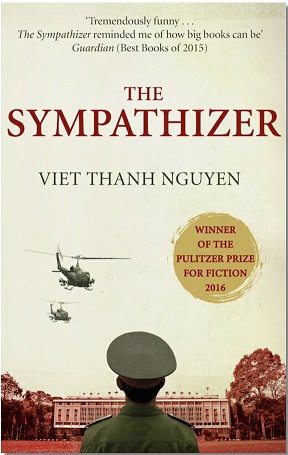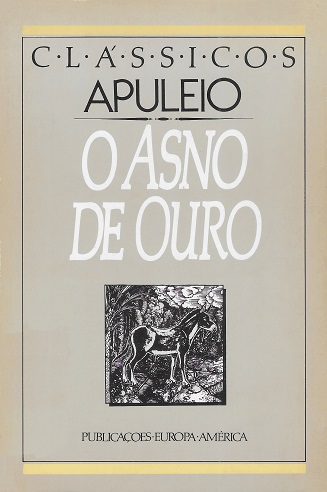He is a spy, a sleeper, a spook, a man of two faces. Not surprisingly, he is a man of two minds. “Remember, you are not half of anything, you are twice of everything”, his loving mother used to say.
Six years have passed since Captain’s capture. He is a patient, not a prisoner, his captures insist. During these six years, Captain should consider himself fortunate to be given the chance to write and perfect his confession, his captures say. This confession spans the entirety of the book, all of which, until Chapter 19, is written in the first person. The main character, Captain, confesses to everything he can remember and think of, going as far back as his childhood.
The events in this historical fiction are mostly based on true events, which Viet Thanh Nguyen drew inspiration from a wide reading list. Albeit abridged, this novel covers the fall of Saigon, Viet Cong activities, South Vietnamese prison and police, American interrogation techniques from the 1950s, and reeducation camps; and is packed with brilliant satire.
Captain is the son of a young Vietnamese woman and French priest, with whom he never really spent time apart from when he was little and sent to Sunday school. After learning that the priest is his father, Captain never returns to Sunday school. His father would send petit ecolier biscuits a couple of times a year, biscuits his mother would only take a small bite from so that her son could indulge in these rare luxuries. Captain struggles with being half-Vietnamese and half-French, he does not look like everyone else, be it in Vietnam or later the United States. His mother lovingly reassures him, he isn’t half of anything but twice of everything.
Captain, whose name we never learn, leaves Vietnam for the United States to go to college, and while there, he learns of his mother’s death. She was only 34 at the time, and he feels helpless not having been home while she was sick. After completing his studies, he returns to Vietnam, where he eventually becomes an army captain. He, along with one of his two best friends, Bon, flee Saigon during its fall. Bon loses his wife and young son as they are running on the tarmac to board the flight out of Saigon. They fly to Thailand where they are given refugee status and wait for their travel to America, which will be their new home.
In America, Captain doesn’t feel at home either; he doesn’t look like anyone else there either. He embraces every aspect of living the ‘American Dream’ – life, liberty and the pursuit of happiness. He is cautious not to say whether he is happy or not so as not to upset those around him; his argument, he writes in the confession, is that saying he is happy implies someone at the table is less happy than him; and saying he is unhappy implies someone at the table is happier than he is and, therefore, that person is made to feel bad that someone isn’t as happy as them. When being asked, Captain says he is living the dream, he is pursuing happiness. But, in actuality, he is unhappy.
While in America, Captain remains a sympathizer of the people in the North. He methodically writes letters to his aunt in Paris, detailing his new life in America; hidden in invisible ink, he writes about the fight and resistance as well as fellow Vietnamese and refugees he meets in Los Angeles. This correspondence is bilateral, and comes with coded messages when it reaches Captain. Auntie, we find out towards the end of the novel, is his other best friend, Man, who never left Vietnam.
In the land of the free and home of the brave, Captain is enamored with his co-worker Sonia, socializes with the Vietnamese community, amongst whom are the General, the Crapulent Major, Sonny, Madam, and Lana. As a way to keep the fight alive and raise funds for the resistance, the freedom of the South, the General opens a liquor store and his wife, Madam, opens a pho soup shop as well. Sonny is the editor of a local Vietnamese community bulletin/newspaper. The General gets word that there is a mole amongst his circle and trustingly asks Captain who he thinks it may be. Not having an answer is not an option, so Captain suggests it could be the Crapulent Major, whom the General orders killed. Having never killed anyone in his life, Bon helps Captain pull this off and make it look like an accident.
In a fate of events, Bon wants to return to Vietnam and Captain shares this wish with Auntie, who strongly advises “do not return”. Captain does anyway, he cannot let Bon go by himself and potentially get killed. In order to be allowed to return to Vietnam, with Bon, the General orders another man killed. This time Captain has to do it himself. After a lot of run-through and rehearsing, his plans go awry, but he pulls it off nonetheless.
Relieved to be returning to Vietnam with his best friend, Captain and Bon, along with their small group of men, are captured while crossing from Thailand into Vietnam through the Mekong. Captain is tortured repeatedly on orders of the Commandant and Commissar. But Commissar is the reason Captain and Bon were not killed during their six-year imprisonment.
After writing and rewriting over and over a lengthy confession to the liking of Commandant and after being tortured and deprived of sleep, Captain is allowed to meet Commissar, “the invisible man”, a man with no face, whose voice he recognizes immediately when they speak. Commissar is Man, Captain’s and Bon’s best friend who never left Vietnam.
Bon and the others in the same group that was captured with Captain are not subject to the same treatment, but that is because Captain is the sympathizer, the mole, the spy, the sleeper, the spook. Captain is a man of two faces.






